There are people who own bikes. Then there are cyclists. A current exhibition at Budapest’s amazing Museum of the Applied Arts (Iparművészeti Múzeum) is most definitely designed for the latter. Those who look beyond the humble bicycle to find even more potential in a great piece of design that, give or take a few years and more than a few refinements, has remained pretty much the same over the last 100 years.
The Bikeology exhibition, lovingly curated by Hungarian doyens of design Kultúrgorilla, wonderfully demonstrates that there are plenty of miles left when it comes to pushing the push bike even further.
The esoteric collection, a temporary addition to the museum’s permanent mix of Hungarian design and style examplars, gathers classic and contemporary of cycle design excellence. Not just to get cyclists’ gimme gimme glands engorged, but also to pose a few big questions about sustainability, the sometimes difficult relationships between cycling and cities and how cultures interact with the bike around the world.
And most excellent the objects are too, taking in everything from vintage vavavoom to groundbreaking designs that use new materials (and indeed, reuse old ones) to ensure the design cycle evolves at the same cadence it revolves.
Here’s a short tour of the exhibits that cranked my pedals, in no particular order…
Two legs bad, two wheels good:
The Sandwichbike. Inspired by the concept of flat pack furniture and home assembly, this fully sustainable wooden-framed wonder is the work of Holland’s Bleijh design studios. It’s available in four regular flavours and like all good sandwiches, there’s an option to order one customised to your spec. Now to find my nearest branch of Bikea…
The drop-dead gorgeous Van Hulsteijn VH1 is the result of designer Herman van Hulsteijn’s desire to create a ‘fast yet spectacular bike to roam the city’. Its beautiful curved frame is handmade in Arnhem, Holland where the custom-made design icons are also hand built. Starting at €2800, this Dutch Master could be a bike too far for most of us.
Assembled in Vienna, Austria in conjunction with bamboo frame makers Boogali in Kampala, Uganda, the Bambooride provides an environmentally sustainable, Fair Trade alternative to standard bikes. According to the manufacturers, it’s as strong and durable as a regular frame, and provides unexpected benefits as it also acts as a natural shock absorber to make the ride more comfortable. Each frame is a one-off to make each bamboo bike unique.
Made in the 1970s by Hungarian bike manufacturer Csepel, this space saving ‘Camper’ model has a distinct cold war air to it. As well as an indispensable essential on those wholesome family holidays in the foothills of the Carpathians, the foldable little fella looks like it would be equally at home in the rear of a Tupolev destined for a midnight parachute deep behind enemy lines. Love the pasted on assembly instructions in the canister lid and the compacted beauty of the stowed beast.
The classic PUCH model nicely demonstrates how the basic design of the push bike has remained unchanged. The Austrian manufacturer made 1000s of these in the years between the wars, with handy features like the integral pump and repair kit for on-the-move maintenance and front and rear splash guards to keep your Oxford bags and brogues pristine.
Accessories to murder (for)
Enough of the bikes. What about the accessories? From a fine array of add-ons, gadgets and gizmos (don’t cyclists just love to accessorise, darling?), two in particular stopped me in my tracks a) because they are dead clever and b) because I really wish I’d thought of them.
First up, the cardboard shopping pannier designed by Christian Steiner and Beatrice Stude. Created from a flat piece of cardboard and just the thing to carry your groceries from the local shop. Be a nice way for retailers to do something nice for their cycling customers, too. Maybe not one for rainier climes, but what a fantastic idea.
Secondly, the hunting trophy bike hanger made from the recycled carcass of an old racer. Lots of people claiming responsibility for this little gem online but I’d love to know who’s actually created this idea to personally congratulate them. I’d be tempted to tape those bars up to avoid frame scratches when hanging and removing your pride and joy (particularly if you own something like the Van Hulsteijn VH1), but why let practicality get in the way of a beautiful design?
Bikeology at The Budapest Museum of the Applied Arts is open until November 27 2016.


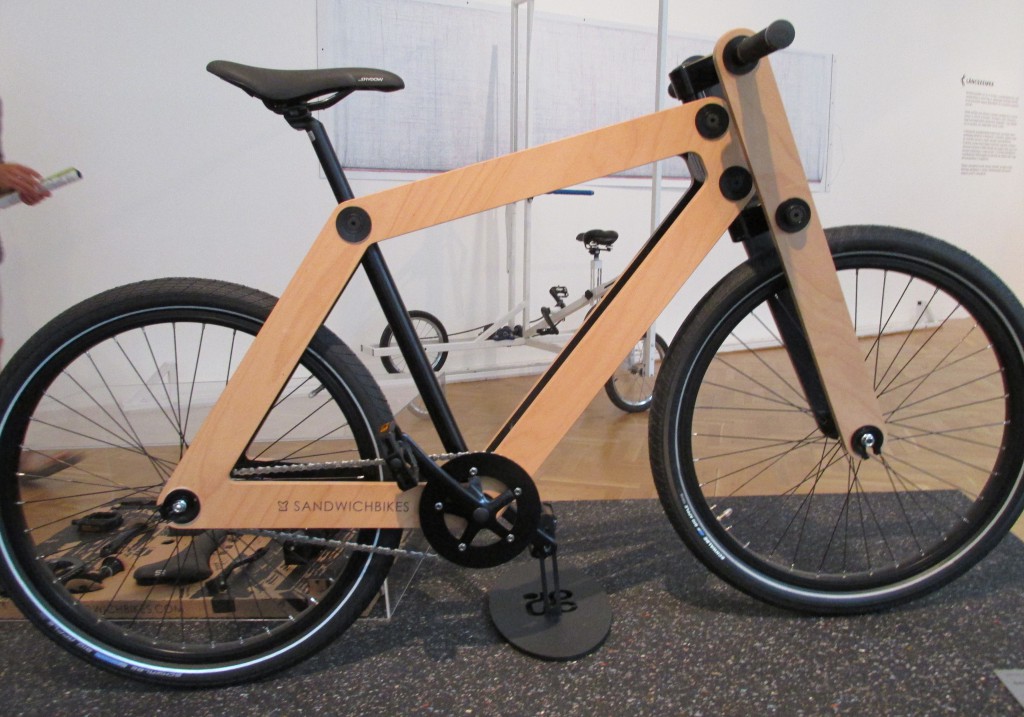
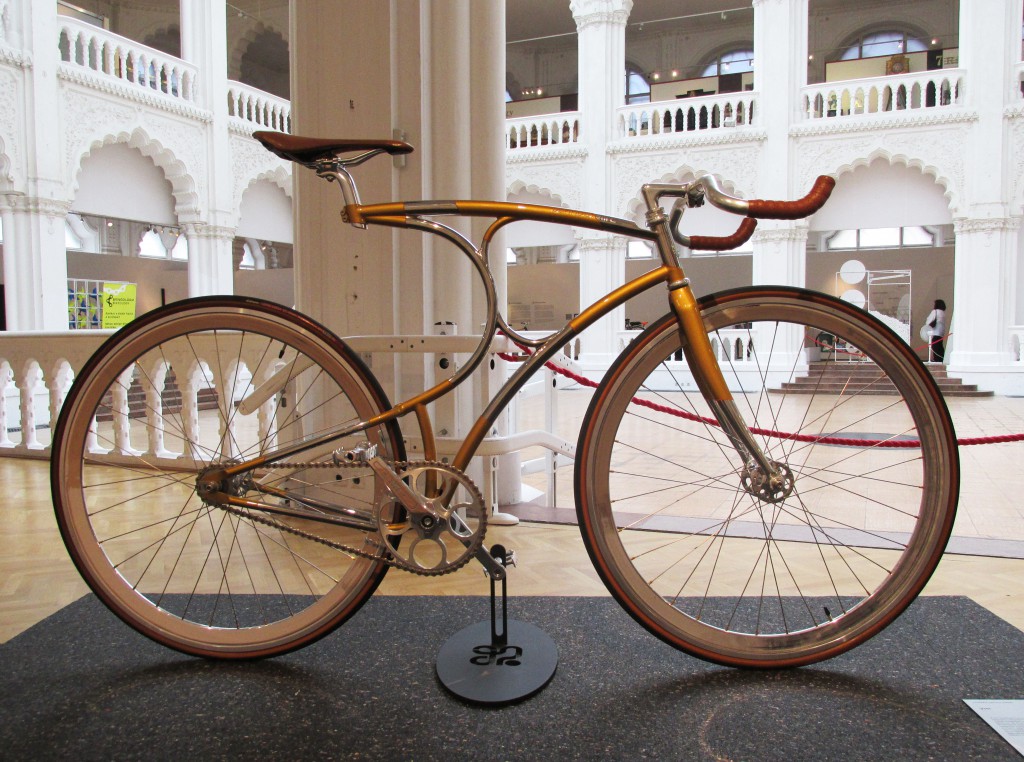
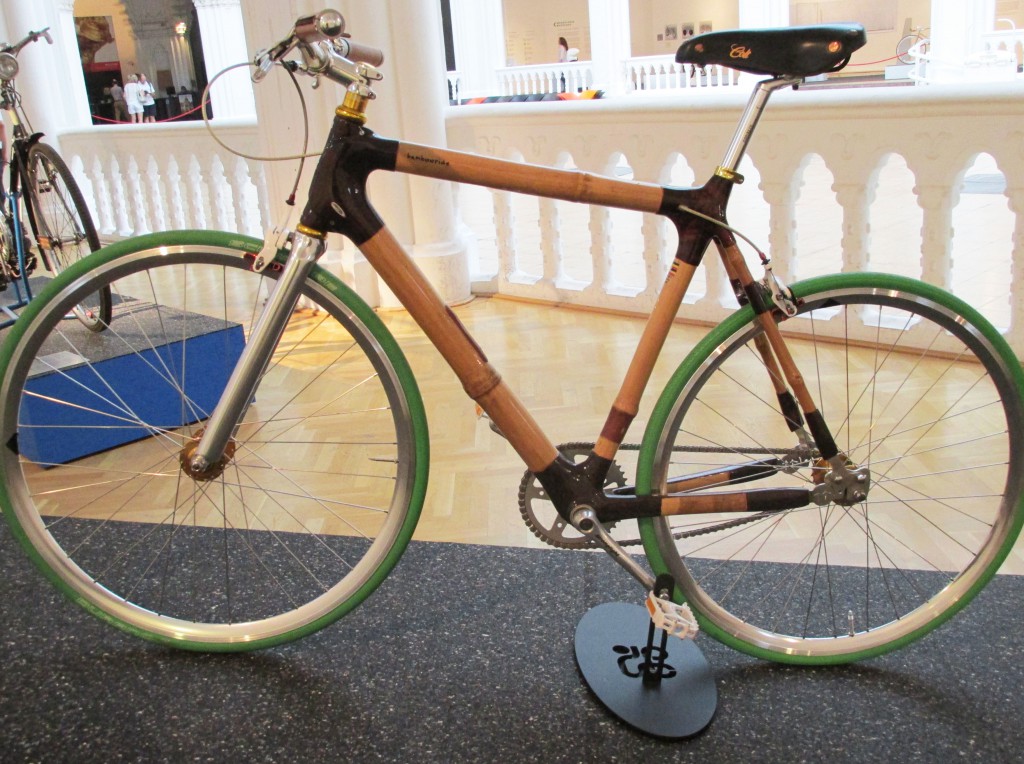
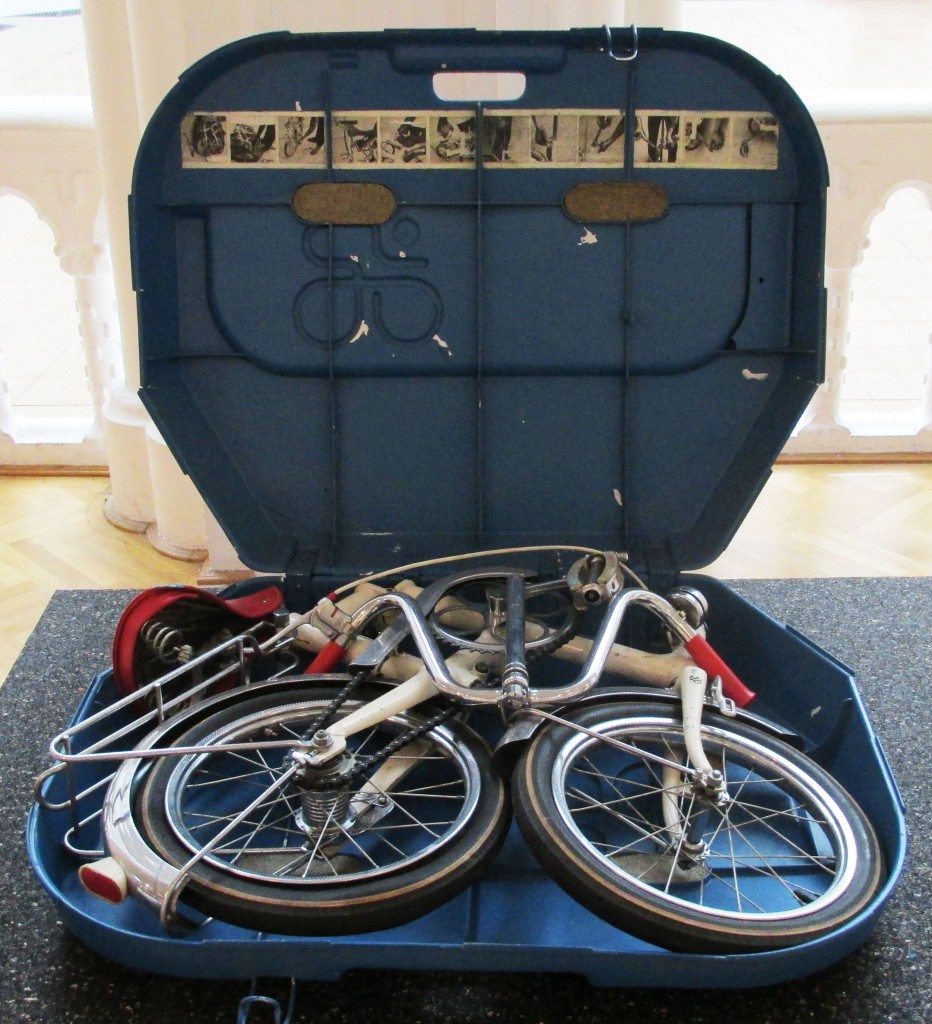
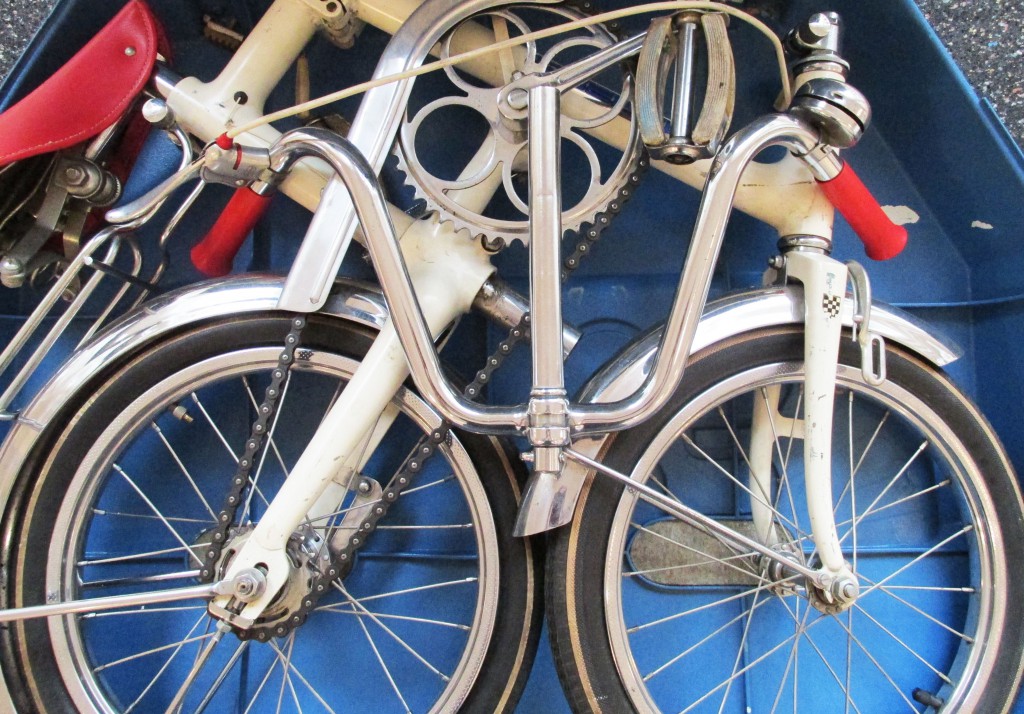
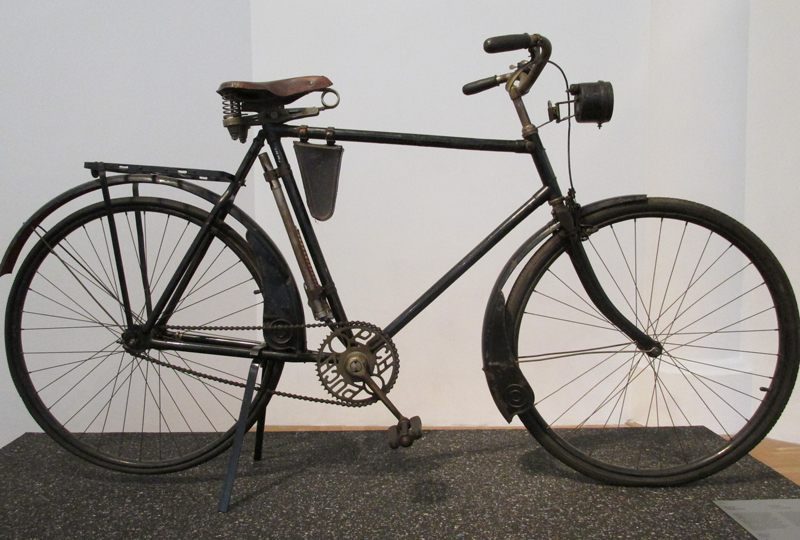
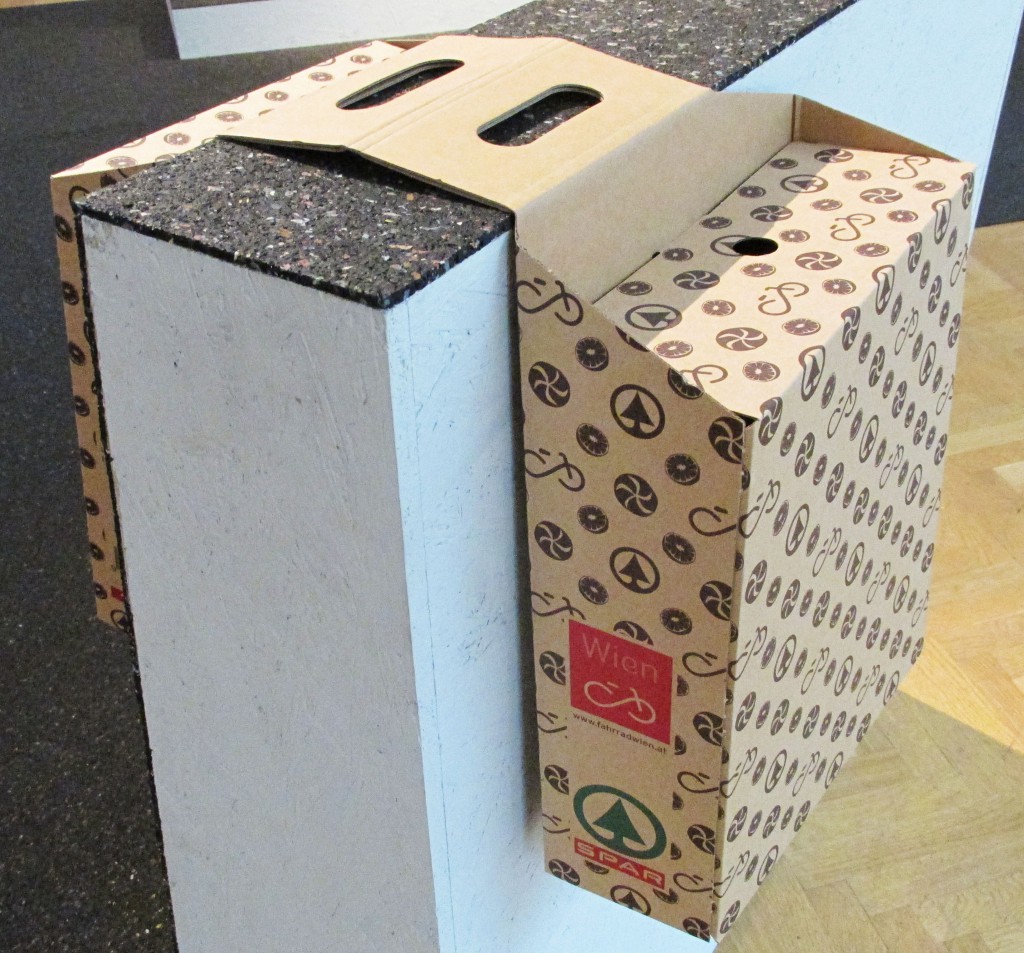
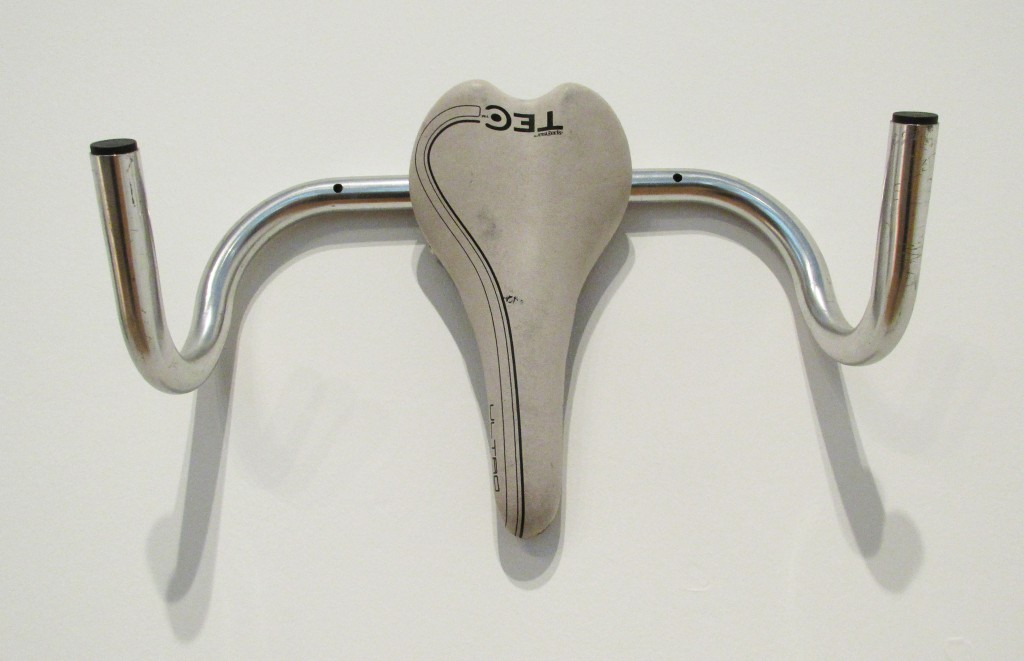
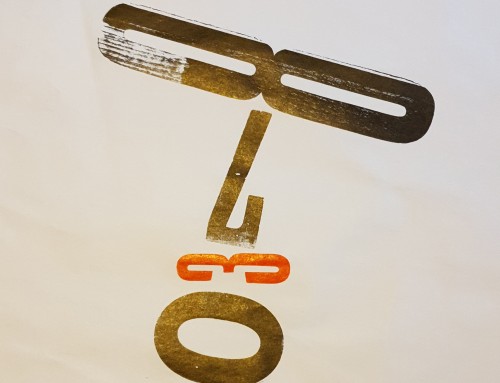

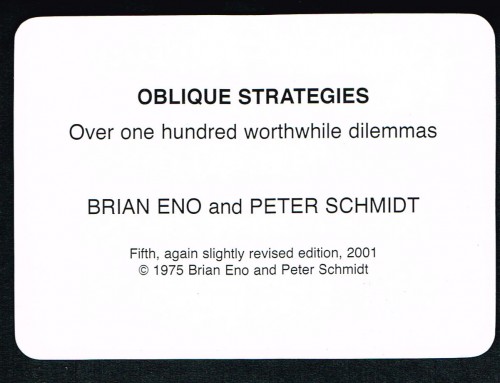

Leave A Comment